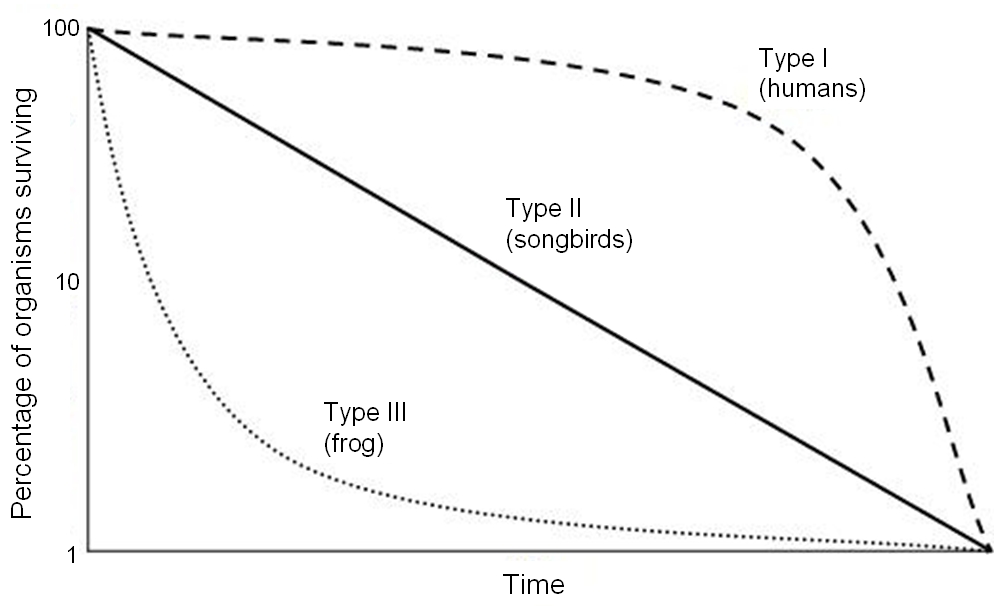Definition of Survivorship Curve
A survivorship curve can be defined as the graphical representation that shows the number of individuals that belong to a certain age for a specific species or group. These types of graphs are constructed for such a group of individuals who are of somewhat the same ages.
Types of Survivorship Curve:
Three types of survivorship curves are present. Type I also have known as convex curve includes such individuals who have high age survival possibility but there comes a rapid decline later in life e.g. humans. Type II also known as diagonal curves includes such individuals whose possibility of survival remains almost constant e.g. birds and lizards. Type III is also known as concave curve and this type includes such individuals which have a very high mortality rate in early life e.g. marine invertebrates. Several reasons like environment contribute to this particular behaviour shown by species and population.
View More Ecology Definitions
Related Questions of Ecology
Predation by one flour beetle species on another can be used as
In chapter 14 we have seen how a herbivorous stream insect controls
How was the amount of food that Gause (1934) provided
How are manipulation of host behavior by spiny-headed worms and
Predation is one of the processes by which one organism exploits another
Ecologists are now challenged to study global ecology. The apparent role
In his experiments on competition between T. confusum and T.
Discuss how mathematical theory, laboratory models, and field experiments have
Explain the roles of food and predators in producing cycles of abundance
What evidence is there that variation in atmospheric CO 2 concentration is
Show All


